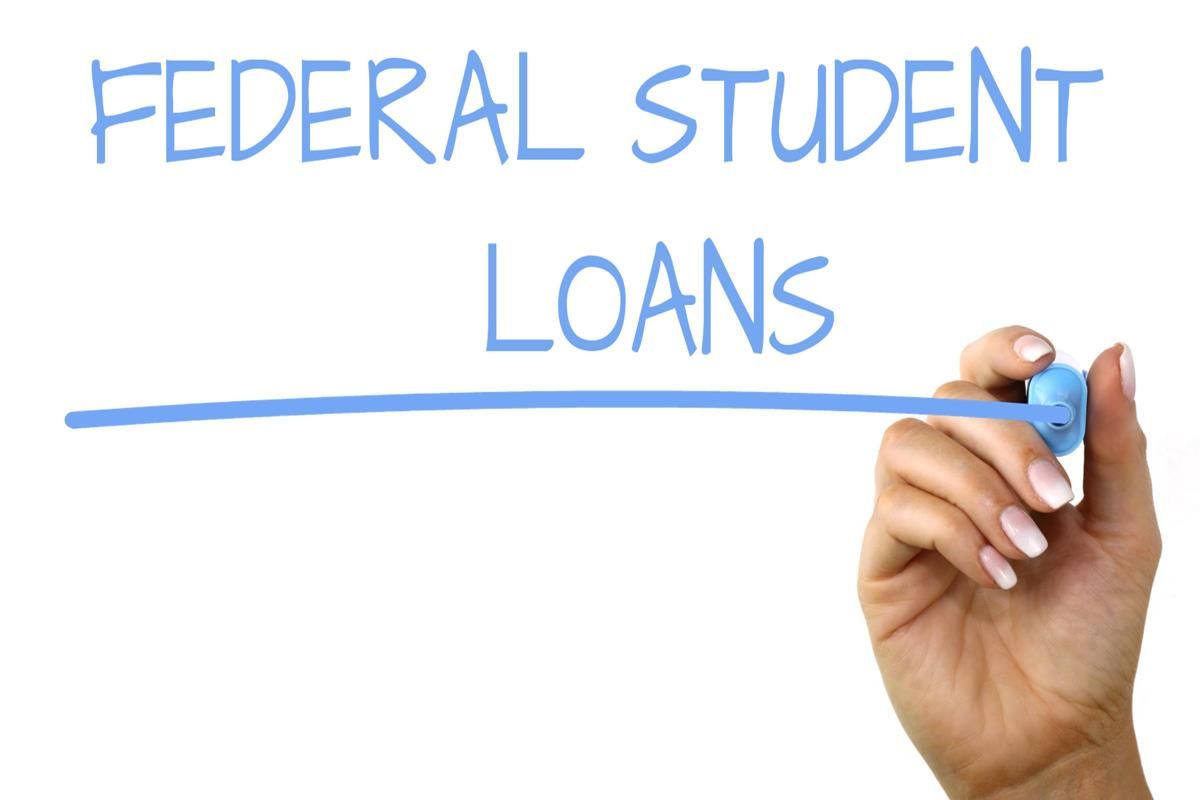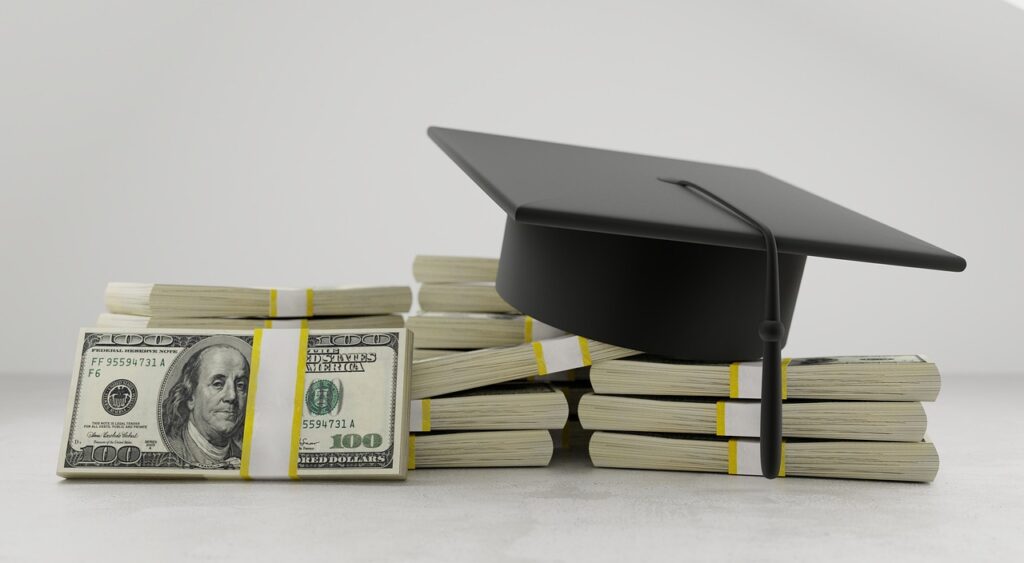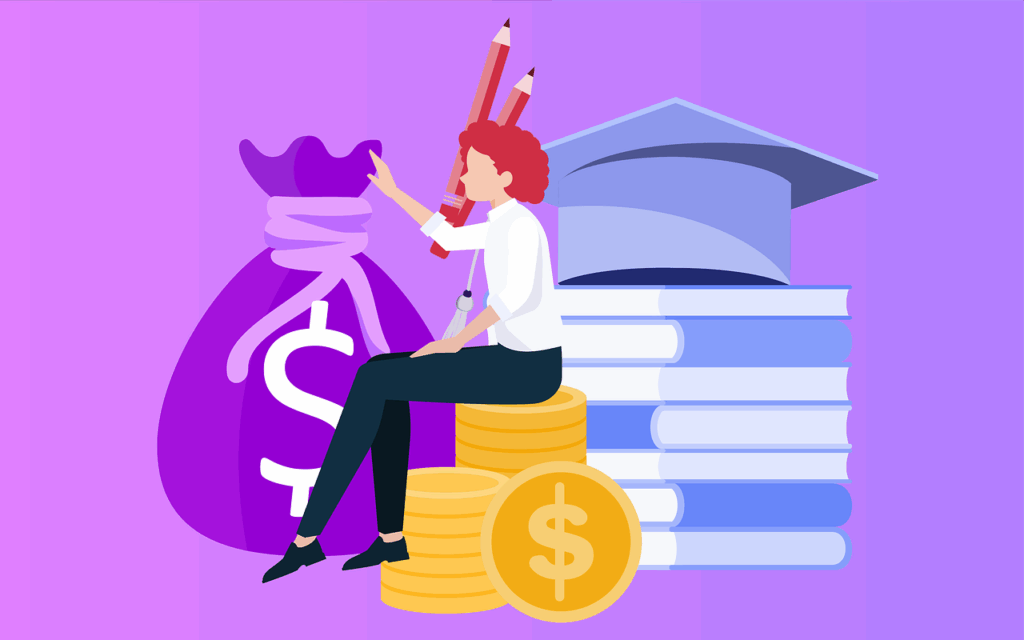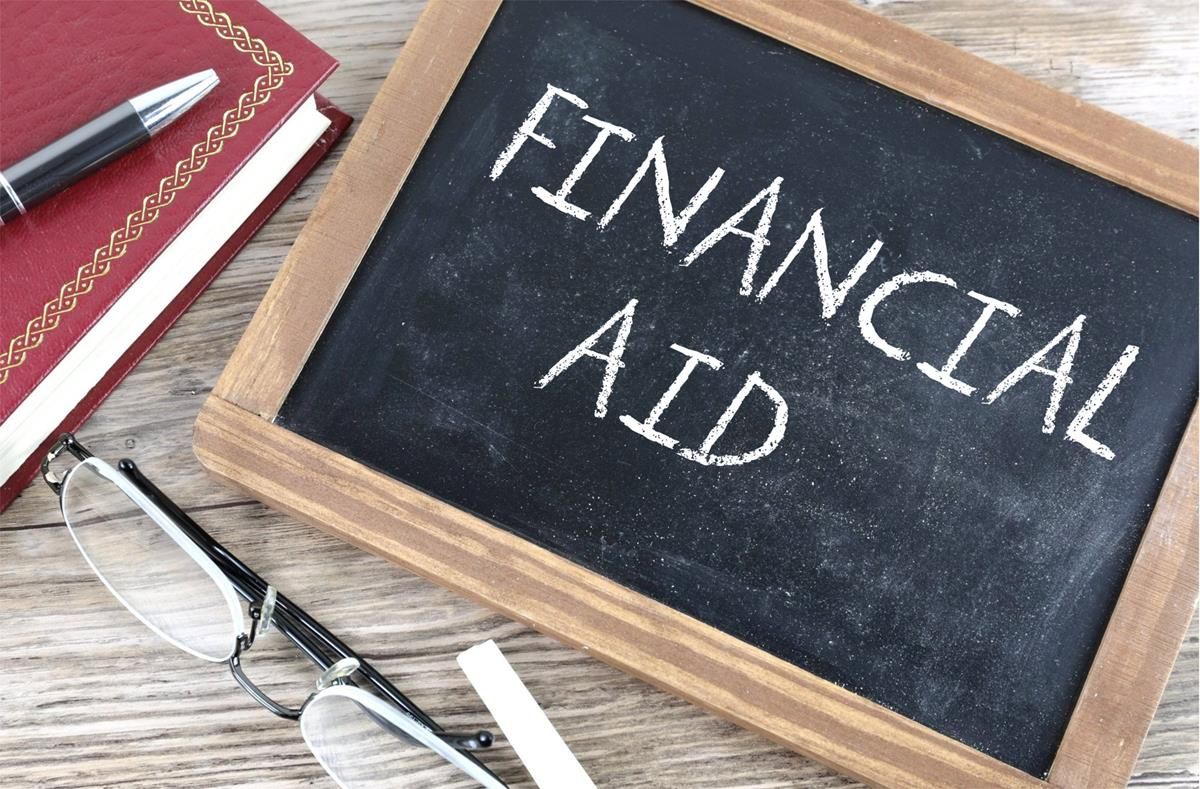
The landscape of student loan debt in the United States is complex and ever-evolving, presenting significant challenges and emerging opportunities for millions of borrowers. The burden of student loans has been a pervasive concern for years, impacting economic mobility and personal financial well-being. In response, various initiatives have been introduced, aiming to alleviate this financial strain and provide pathways to debt relief.
Understanding these programs, both those currently active and those undergoing significant development or legislative shifts, is paramount for borrowers seeking to navigate their financial futures effectively. This article aims to provide a clear, comprehensive overview of the current state of student loan forgiveness and repayment options. We will detail the initial widespread federal forgiveness efforts, explore established income-driven repayment strategies, and highlight a groundbreaking state-level reimbursement program, offering a foundational understanding of the relief mechanisms available today.
The information presented here is drawn directly from official sources and legislative documents, offering a factual and unbiased account of the mechanisms in place to assist borrowers. From direct debt cancellation to income-based adjustments and specialized forgiveness pathways, a multifaceted approach is shaping the student loan environment, including federal proposals and state-led innovations.

1. **Federal Student Loan Forgiveness: Up to $20,000 for Eligible Borrowers**The Biden administration initiated a significant student debt relief plan, proposing up to $20,000 in debt cancellation for eligible federal student loan borrowers. This plan specifically targeted individuals who had received Pell Grants, a federal grant awarded to undergraduate students with “exceptional financial need,” offering them up to $20,000 in forgiveness. Other federal borrowers who did not receive Pell Grants were eligible for up to $10,000 in loan forgiveness.
Eligibility for this broad forgiveness was tied to income thresholds: an annual income under $125,000 for individuals or under $250,000 for families filing jointly. For those claimed as dependents on taxes, eligibility was determined based on the income of the person claiming the dependent. The administration estimated this initiative could provide relief to approximately 43 million borrowers, potentially canceling the “full remaining balance for roughly 20 million borrowers.”
A crucial, often overlooked, aspect of this initial plan was the provision for borrowers who had already paid down their loans during the federal payment pause. For those who made payments on eligible loans between March 13, 2020, and December 31, 2022, they had the option to request a refund of those payments. This refunded amount would then reappear in their account as a loan balance, which could subsequently be covered by the forgiveness amount. Borrowers were advised to contact their loan servicer to initiate this refund process; applications for the main loan forgiveness were expected by mid-October of that period.

2. **The SAVE Plan: A New Horizon for Income-Driven Repayment**The Saving on a Valuable Education (SAVE) Plan, introduced by the Biden-Harris administration, represents the newest iteration of income-driven repayment (IDR) plans, designed to provide substantial relief to a wide array of borrowers. Despite facing recent legal challenges, the SAVE Plan remains a vital option for millions of Americans grappling with student loan debt. Its core benefits include the potential for $0 monthly payments for many low-income borrowers, along with reduced payments for others, calculated based on their income and family size.
A cornerstone feature of the SAVE Plan, which continues to be in effect, is the reduction of undergraduate loan payments from 10% to 5% of a borrower’s discretionary income. This adjustment significantly lowers the monthly burden for a vast number of students. Furthermore, the plan includes a critical provision that waives any interest not covered by a borrower’s monthly payment, preventing loan balances from ballooning due to unpaid interest, a common issue under previous IDR plans.
U.S. Secretary of Education Miguel Cardona has underscored the plan’s enduring significance, noting that it “still means lower monthly payments for millions of borrowers – including more than 4 million borrowers who owe no payments at all, and protections for borrowers facing runaway interest when they are making their monthly payments.” This statement highlights the administration’s commitment to the SAVE Plan as a cornerstone of its debt relief strategy, urging eligible borrowers to enroll via StudentAid.gov or their loan servicer to assess its potential benefits for their specific financial circumstances.

3. **Public Service Loan Forgiveness (PSLF): A Path for Dedicated Professionals**Public Service Loan Forgiveness (PSLF) stands as a distinct and highly beneficial program designed for individuals who dedicate their careers to public service. This program offers a direct path to the elimination of remaining federal student loan debt after a specific period of qualifying employment and payments. PSLF complements broader forgiveness initiatives by providing a targeted avenue for those working in government or non-profit sectors to achieve full loan cancellation, irrespective of other proposed debt relief outcomes.
The core requirement for PSLF is the completion of 120 qualifying monthly payments while working full-time for an eligible public service employer. These employers include federal, state, local, or tribal governments, as well as most non-profit organizations. Significant reforms have recently been implemented to make it easier for borrowers to qualify for PSLF, addressing past complexities and frustrations that prevented many eligible individuals from receiving the forgiveness they earned.
Borrowers interested in PSLF are strongly encouraged to utilize the PSLF Help Tool available on StudentAid.gov to verify their eligibility and track their progress toward forgiveness. This tool assists in confirming employer eligibility and identifying qualifying payments. For countless individuals committed to serving their communities, PSLF provides a robust and well-established mechanism for achieving financial freedom from student loan obligations.

4. **Income-Driven Repayment (IDR) Forgiveness: Tailoring Payments to Your Financial Reality**Beyond the specific SAVE Plan, the broader framework of Income-Driven Repayment (IDR) plans offers a crucial safety net for federal student loan borrowers, providing a pathway to manage monthly payments more affordably and, ultimately, achieve forgiveness. These plans calculate monthly payments based on a borrower’s income and family size, ensuring that payments are manageable and responsive to financial fluctuations. This approach can lead to immediate payment reductions, offering much-needed breathing room for those facing economic challenges.
A significant benefit of IDR plans is the provision for loan forgiveness after a specified period of payments. Depending on the specific IDR plan a borrower is enrolled in, any remaining loan balance may be forgiven after 20 or 25 years of qualifying payments. This long-term forgiveness prevents borrowers from being trapped in a cycle of endless debt, particularly those with high loan balances relative to their earning potential.
While the various proposed broader forgiveness plans develop, IDR plans remain a stable and accessible option. They are designed to work in conjunction with any future interest relief or debt cancellation, offering a layered approach to managing and ultimately resolving student loan debt. Borrowers are encouraged to explore the different IDR options available through StudentAid.gov to find the plan that best aligns with their current financial situation and long-term goals.

5. **The IDR Account Adjustment: Accelerating the Path to Forgiveness**A unique and impactful opportunity for many federal student loan borrowers is the ongoing, one-time Income-Driven Repayment (IDR) Account Adjustment. This significant initiative is designed to address historical inaccuracies and inconsistencies in how qualifying payments were counted under IDR plans, potentially bringing millions of borrowers closer to, or even immediately achieving, loan forgiveness. It represents a proactive step by the Department of Education to ensure that borrowers receive appropriate credit for their repayment history.
The IDR Account Adjustment provides credit for past periods spent in nearly any student loan repayment status, including significant time spent in deferment and forbearance, which previously did not count towards forgiveness. This broad crediting means that periods where borrowers were struggling financially or were not actively making payments may now be recognized as progress toward their 20- or 25-year forgiveness timeline. For some borrowers, this adjustment could result in immediate loan forgiveness, effectively clearing their entire federal student loan debt.
Processing for this adjustment is slated to continue through September 1, 2024. Borrowers are advised to regularly check their Federal Student Aid account for updates, as the changes are being applied automatically for eligible accounts. This adjustment directly complements any proposed interest relief, as it fundamentally reduces the time horizon over which interest accrues, thereby lessening the overall burden on borrowers and moving them closer to a debt-free future.

6. **Borrower Defense to Repayment (BDR): Seeking Justice for Misled Students**The Borrower Defense to Repayment (BDR) program provides a critical pathway for federal student loan borrowers to achieve full loan cancellation if their educational institution engaged in misconduct or defrauded them. This program is specifically designed to address instances where schools made misrepresentations about their programs, job placement rates, or other crucial aspects, leading students to incur debt for an education that did not deliver on its promises. BDR complements broader debt relief efforts by tackling the root cause of some borrowers’ financial struggles.
When a borrower successfully applies for BDR, it can result in the complete cancellation of their federal loans tied to the fraudulent institution, potentially offering more extensive relief than generalized programs. Recent policy changes aim to streamline the application process, making it more accessible for eligible borrowers to seek relief. These reforms acknowledge the significant harm caused by predatory practices within higher education.
If a borrower suspects that their school engaged in misconduct or made misleading claims, they are encouraged to consider applying through the Federal Student Aid website. This avenue ensures that justice is pursued for those harmed by unscrupulous educational practices, providing a means to rectify financial burdens unjustly incurred. The BDR program stands as a vital consumer protection measure within the complex student loan system.
7. **Connecticut’s Pioneering Student Loan Reimbursement Program: A State-Led Solution**In a groundbreaking move, Connecticut has introduced a new state law, effective January 1, that establishes a first-of-its-kind student loan reimbursement program for its residents. This innovative initiative offers a direct financial lifeline, providing eligible individuals with up to $5,000 per year for up to four years, totaling a potential reimbursement of $20,000. This program signifies a unique state-level commitment to alleviating the widespread burden of student loan debt, recognizing its impact on individual finances and the broader economy.
The program, which has allocated $6 million in its current budget cycle, operates on a first-come, first-served basis, underscoring the importance of early application for interested parties. State Representative Corey Paris of Stamford articulated the program’s significance, stating, “Student loan debt can be crippling. It feels like you’re never gaining ground.” He emphasized how the annual $5,000 reimbursement frees up funds for essential living expenses and enables progress toward significant personal goals.
Eligibility for this impactful program is specific and comprehensive, requiring applicants to meet several key criteria set by the state Office of Higher Education. These include having graduated from a Connecticut state public or private college or university with a bachelor’s or associate degree, or possessing an occupational/professional license or certificate, or having left such a college in good standing with a hardship waiver. Applicants must also have been a Connecticut resident for at least five years and meet specific Connecticut adjusted gross income thresholds: not more than $125,000 for single filers or $175,000 for married applicants filing jointly or as head of household. They must have an outstanding student loan balance and have made payments in 2024 toward eligible federal or private student loans. Finally, applicants must have volunteered for at least 50 hours at a Connecticut nonprofit, municipal government, served on a nonprofit board, or have military service after January 1, 2024. This program offers tangible relief, setting a precedent for state-level action on student debt.
Beyond the current landscape of student loan relief, the federal government continues to explore and implement further measures aimed at alleviating the financial burdens faced by millions of borrowers. These efforts encompass both new proposals from the Biden administration under the Higher Education Act and significant legislative changes introduced by the “One Big Beautiful Bill” signed by former President Trump, which will reshape the future of student loan borrowing and repayment options. Understanding these prospective and impending changes is essential for borrowers to anticipate their financial trajectories and plan accordingly.
The Biden-Harris administration has outlined a new set of proposals under the Higher Education Act of 1965, building upon previous efforts to deliver targeted debt relief. These plans aim to address various facets of the student loan challenge, from accrued interest to the specific circumstances of certain borrower groups. Simultaneously, the comprehensive legislation enacted during the previous administration introduces structural reforms that will profoundly impact the system for years to come, necessitating a thorough examination of both the short-term opportunities and long-term implications for student loan borrowers across the nation.

8. **Proposed Higher Education Act Relief: Targeted Interest Cancellation**The Biden-Harris administration’s latest proposals under the Higher Education Act include a significant provision for targeted interest cancellation. This plan aims to provide relief to all borrowers who have accrued or capitalized interest on their loans since entering repayment. Under this proposal, all borrowers could be eligible for up to $20,000 in interest cancellation, directly addressing the common issue of loan balances growing beyond the original principal due to interest accrual.
Furthermore, a more expansive interest cancellation is proposed for low- and middle-income borrowers who are enrolled in the Saving on a Valuable Education (SAVE) Plan or other income-driven repayment (IDR) plans. For these individuals, the entire interest balance accrued since entering repayment could be canceled if their annual income falls below specific thresholds: $120,000 for individuals or married individuals filing separately, $180,000 for heads of household, or $240,000 for married borrowers filing joint taxes. The administration estimates that this particular proposal could result in interest balances being forgiven for 25 million borrowers, with approximately 23 million likely to see their entire balance growth eliminated.

9. **Proposed HEA Relief: Automatic Forgiveness for Eligible, Unenrolled Borrowers**A key component of the new Higher Education Act relief initiative is the provision for automatic debt cancellation for borrowers who would otherwise qualify for existing loan forgiveness programs, such as income-driven repayment (IDR) plans or Public Service Loan Forgiveness (PSLF), but have not yet applied or enrolled. This mechanism leverages existing data held by the U.S. Department of Education to proactively identify and provide relief to those who are already eligible but may have missed the opportunity to apply through conventional channels.
For instance, the Department of Education intends to use available data to identify borrowers enrolled in the SAVE Plan who have been in repayment for at least 10 years or more and initially took out small loan balances. Under the SAVE Plan, borrowers who borrowed $12,000 or less are eligible for remaining debt cancellation after 10 years of repayment, with an additional year of repayment required for every extra $1,000 borrowed up to $21,000 for undergraduates and $26,000 for graduates. Similarly, for PSLF, borrowers who have dedicated 10 years to public service and made 120 qualifying monthly payments could see their remaining student debt automatically canceled. This proactive approach is projected to cancel debt for approximately 2 million borrowers nationwide.

10. **Proposed HEA Relief: Time-Based Loan Forgiveness for Long-Term Borrowers**Among the new categories for student debt cancellation under the Higher Education Act, the Biden administration proposes a direct path to forgiveness based on the duration a borrower has been in repayment. This initiative aims to provide a definitive end to student loan obligations for individuals who have diligently made payments over a substantial period, regardless of their enrollment in income-driven repayment plans. The intent is to acknowledge and reward sustained repayment efforts, preventing borrowers from being trapped in a cycle of endless debt.
Specifically, the proposal outlines that borrowers with undergraduate loans would qualify for forgiveness if their loans entered repayment at least 20 years ago. For those with graduate school debt, the threshold for qualification would be 25 years since their loans first entered repayment. This time-based forgiveness mechanism offers a distinct pathway to debt relief, providing certainty for a segment of borrowers who have been navigating their loan obligations for two decades or more, and represents a significant step toward simplifying the process of achieving full loan cancellation.

11. **Proposed HEA Relief: Debt Cancellation for Low-Financial-Value Programs**Another critical aspect of the proposed Higher Education Act relief focuses on addressing the financial harm caused by educational institutions or programs that have failed to deliver adequate value to their students. This provision aims to cancel student debt for borrowers who took out loans associated with such low-financial-value programs, offering a direct remedy for those who invested in an education that did not yield expected returns in terms of career prospects or manageable debt.
The criteria for defining “low financial value” are based on concrete indicators designed to identify programs that consistently leave students with disproportionate debt burdens relative to their post-graduation earnings. This includes institutions or programs that have lost their eligibility to participate in federal student aid programs, have been denied recertification, exhibit excessive student loan default rates, or impose unaffordable debt burdens on their graduates. This targeted relief seeks to protect borrowers from predatory or ineffective educational offerings, reinforcing accountability within the higher education system.

12. **Proposed HEA Relief: Hardship-Based Debt Cancellation**Recognizing that various life circumstances can impede a borrower’s ability to repay student loans, the Biden administration’s Higher Education Act proposals also include a category for debt cancellation based on demonstrated financial hardship. This provision aims to provide a crucial safety net for borrowers facing severe economic challenges that prevent them from fully satisfying their loan obligations, either currently or in the foreseeable future.
The plan suggests a two-tiered approach to hardship relief. Borrowers predicted to be at a high risk of defaulting on their student loans could be eligible for automatic relief, utilizing data analytics to proactively identify those most in need. Additionally, individuals experiencing other significant cost burdens, such as substantial medical debt or overwhelming childcare expenses, could apply for relief through a dedicated application process. This flexible approach is designed to provide relief to millions of borrowers across diverse situations, acknowledging that financial distress can stem from a variety of sources beyond just income levels.

13. **The ‘Big Bill’: Overhauling Income-Driven Repayment with the RAP Plan**A landmark piece of legislation signed by former President Donald Trump, colloquially referred to as the “One Big Beautiful Bill” or the “Big Bill,” introduces a seismic shift in the landscape of federal student loan repayment, particularly for income-driven repayment (IDR) plans. This bill, effective on varying timelines, fundamentally alters options available to current and future borrowers, commencing with the creation of a new income-driven repayment plan known as the Repayment Assistance Plan, or RAP plan.
The RAP plan introduces significant changes compared to existing IDR structures. Unlike previous IDR plans that allowed for $0 monthly payments for borrowers below the federal poverty line, the RAP plan mandates a minimum payment of at least $10 a month for all borrowers, regardless of their income level or family size. Monthly payments under RAP are calculated as a percentage of the borrower’s total income (Adjusted Gross Income, or AGI), minus $50 per month per dependent. While it retains the interest waiver feature similar to the SAVE plan, preventing interest from accruing beyond the monthly payment, it uniquely provides for a reduction in principal by up to $50 if the payment alone does not cover it. However, the RAP plan is projected to be notably more expensive for low-income borrowers than the SAVE plan and will only provide loan cancellation after 30 years of qualifying payments, a longer period than most existing IDR plans. The RAP plan is slated to become available to borrowers starting July 1, 2026.
In a sweeping change that will reshape the IDR landscape, the “Big Bill” also directs the Department of Education to eliminate the PAYE, ICR, and SAVE plans by July 1, 2028, with the possibility of this occurring sooner. Once these plans are phased out, borrowers whose loans were disbursed before July 1, 2026, will primarily be left with the Standard Repayment Plan, the new RAP plan, the Income-Based Repayment (IBR) Plan, and Graduated and Extended Plans. For a considerable number of borrowers, this change is expected to result in significantly higher monthly payments than those offered by the eliminated SAVE Plan. If borrowers enrolled in one of the soon-to-be-eliminated plans do not actively select an alternative repayment plan by the time of their elimination, their Direct Loans for their own education will be automatically placed into the RAP plan, while any Federal Family Education Loan (FFEL) Program loans and Direct Consolidation loans that repaid a Parent PLUS loan will be transitioned into the IBR plan. Minor adjustments to the IBR plan will also make more existing borrowers eligible by removing the “partial financial hardship” requirement.

14. **The ‘Big Bill’: Sweeping Changes to future Borrowing and Forgiveness Eligibility**Beyond the immediate changes to income-driven repayment, the “One Big Beautiful Bill” introduces a series of far-reaching structural reforms that will profoundly impact future borrowing, access to forgiveness programs, and the overall management of federal student loans. These changes affect borrowers differently depending on when their loans were disbursed or consolidated, creating distinct pathways for those entering the system after key dates.
For borrowers who take on any new federal loan, including those who consolidate an existing federal loan, on or after July 1, 2026, their repayment options will be significantly constrained, limited to only the standard repayment plan or the new RAP plan. The standard repayment plan itself will be altered, with its length determined by the total amount borrowed. Notably, borrowers pursuing Public Service Loan Forgiveness (PSLF) with more than $25,000 in loans taken out after July 1, 2026, will find that only payments made under the RAP plan will qualify for PSLF, as standard plans longer than 10 years will no longer count. Furthermore, borrowers taking out loans after July 1, 2027, will face tighter restrictions on payment pauses, losing access to economic hardship or unemployment deferments and being limited to a maximum of nine months of many forbearances within any two-year period. These combined limitations on postponement options, coupled with the elimination of $0 payments for new borrowers in poverty, could increase the likelihood of default for financially distressed individuals.
The bill also enacts substantial changes for Parent PLUS loan borrowers and the Grad PLUS loan program. Most Parent PLUS borrowers will lose access to income-driven repayment plans unless they consolidate their loans before July 1, 2026, and are enrolled in an IDR plan by July 1, 2028, at which point they will only be eligible for the Income-Based Repayment (IBR) plan. New Parent PLUS loans or consolidations after July 1, 2026, will only qualify for the new standard repayment plan, without access to economic hardship or unemployment deferments after July 1, 2027, and with limited forbearance options. The Grad PLUS loan program, which previously allowed graduate students to borrow up to the full cost of attendance, will be eliminated for any borrowers starting a program on or after July 1, 2026, accompanied by new overall limits on federal student and parent borrowing. Additionally, while the Borrower Defense and Closed School Discharge programs are not eliminated, the “Big Bill” makes it harder for borrowers to access relief for loans issued before July 1, 2035, by reverting to older, more restrictive program rules. On a more positive note, starting July 1, 2027, borrowers will be permitted to rehabilitate loans up to two times to remove them from default, offering a crucial second chance for those struggling to regain good standing. In light of these sweeping changes, borrowers are strongly advised to keep their contact information updated with StudentAid.gov and their loan servicers, and Parent PLUS borrowers, in particular, should consider consolidating their loans and enrolling in the Income-Contingent Repayment (ICR) plan before July 1, 2026, to preserve access to income-based payment options.
The evolving landscape of student loan policy, marked by both ongoing administrative initiatives and foundational legislative reforms, underscores the dynamic nature of debt relief efforts in the United States. Borrowers are encouraged to remain vigilant, consult official federal resources, and proactively engage with their loan servicers to navigate these changes effectively and maximize their opportunities for financial relief. Each proposed and enacted change carries distinct implications, highlighting the importance of informed decision-making in managing student loan obligations.




